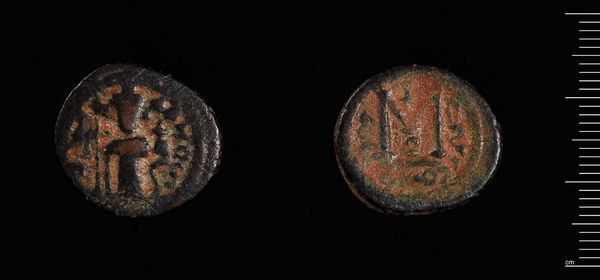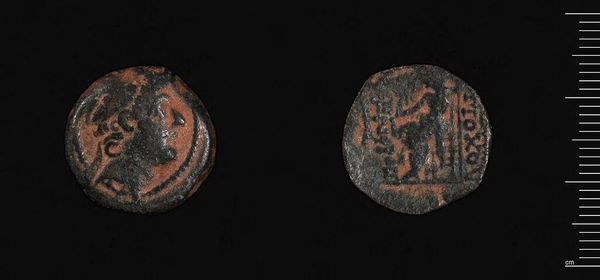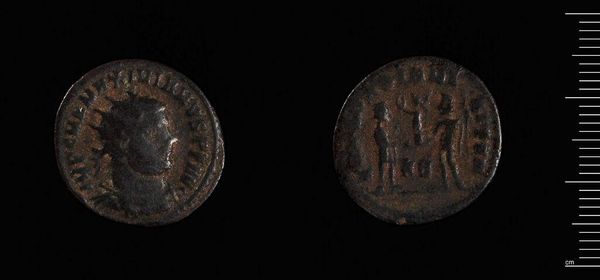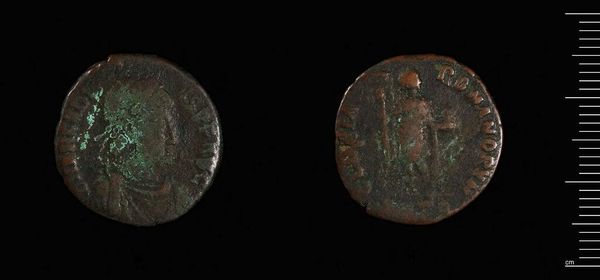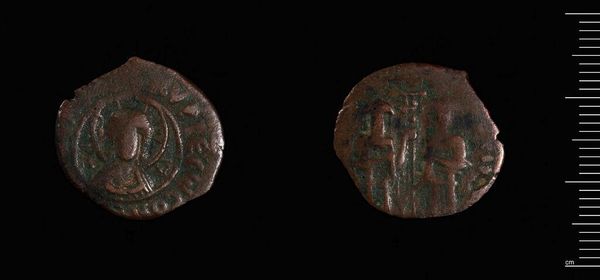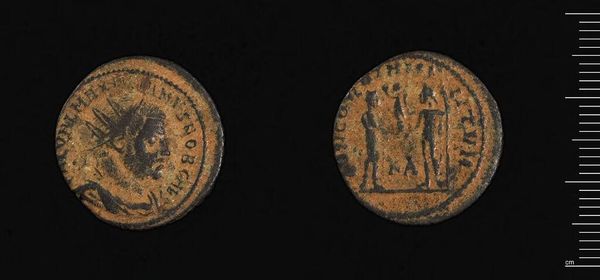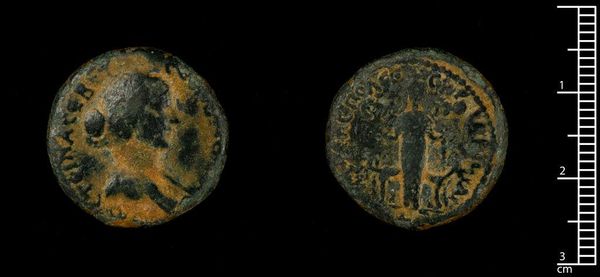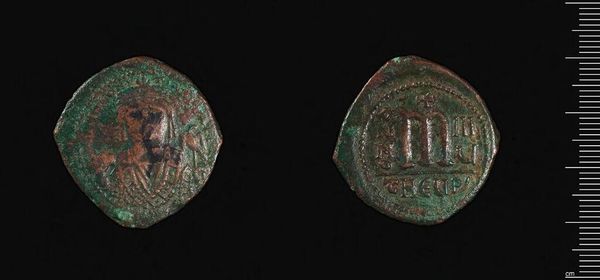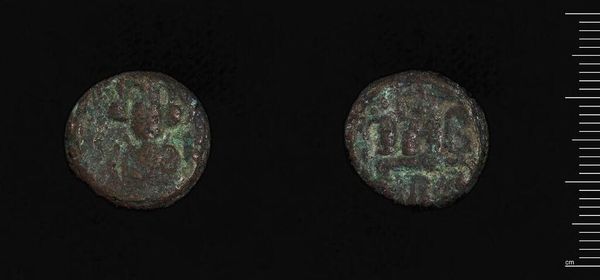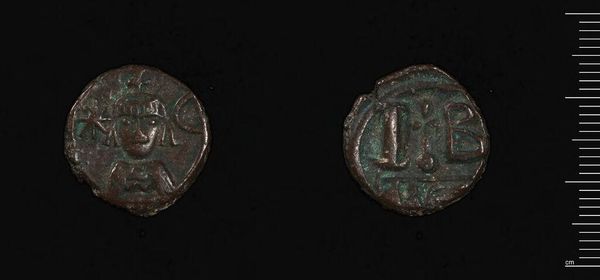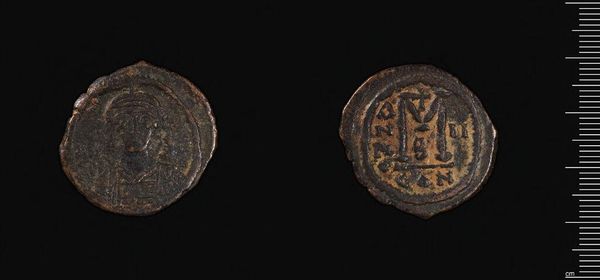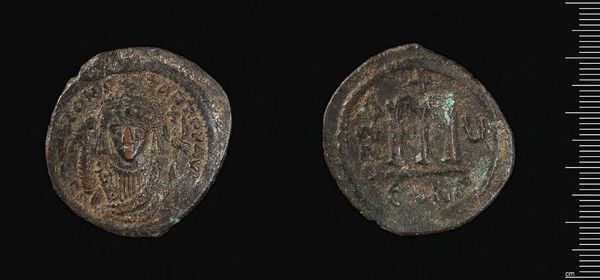
Copper Imitation of Follis of Herakleios, Baalbek 638 - 641
0:00
0:00
Dimensions: 4.33 g
Copyright: CC0 1.0
Curator: This copper coin, a later imitation of a Follis of Herakleios, was crafted in Baalbek during the Umayyad dynasty, carrying a weight of approximately 4.33 grams. It looks incredibly worn. Editor: It certainly does. At first glance, it evokes a feeling of resilience, given its age and visible wear, yet the design hints at the power dynamics at play during its creation. Curator: Precisely. Examining this coin within its socio-political context, we see how Abd-al-Malik, as caliph, utilized existing Byzantine currency designs, subtly adapting them to reflect the shift in power and the rising Islamic influence. Editor: The act of imitation itself speaks volumes. Who is being represented, who is being excluded? It opens up broader questions of cultural appropriation and the construction of identity in the wake of conquest. Curator: Absolutely. The coin’s imagery, while drawing on Herakleios’ iconography, also marked a visual shift towards the Umayyad dynasty's own brand of authority. Editor: Such a small object, and yet it presents layers of narratives about power, identity, and cultural exchange that continue to resonate today. Curator: It’s fascinating to consider how this small piece circulated, influencing perceptions and normalizing a new political reality. Editor: It truly highlights how art can act as a quiet, yet impactful agent of change.
Comments
No comments
Be the first to comment and join the conversation on the ultimate creative platform.
